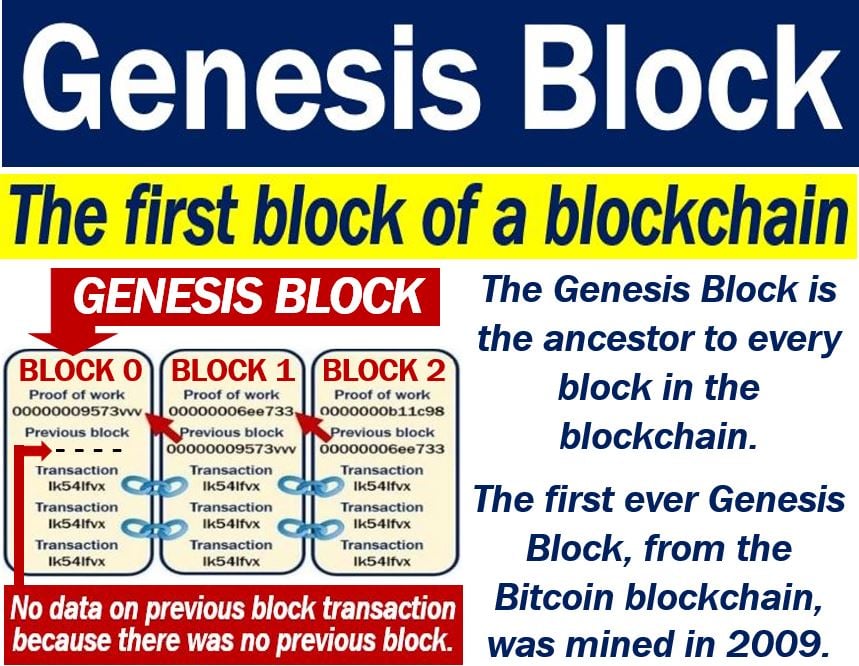Genesis block – definition and example
A Genesis Block is a blockchain’s first block, the original one.
Some cryptocurrencies call it Block Zero or Block 0, while some early versions referred to it as Block 1.
The Genesis Block is typically hard-coded into the cryptocurrency’s application software. The first block in the blockchain is the only one not to have a reference to a preceding block. It does not have that reference because it is the first block, i.e., there is no preceding block.
Do not confuse the term with Generation transaction, which is the first transaction in a block. A miner creates the Generation transaction.
Bitcoin wiki says the following regarding the term:
“A Genesis Block is the first block of a blockchain. Modern versions of Bitcoin number it as block 0, though very early versions counted it as block 1.”
Bitcoin’s Genesis Block
Satoshi Nakamoto, the creator of Bitcoin, mined the first ever Genesis Block. It contains fifty Bitcoins.
He mined the block in 2009 over the course of six days.
Those fifty Bitcoins are unspendable. Some people say that Nakamoto created the first blockchain’s block knowing what it would set off. Others say that he had no idea, i.e., it was all a fluke.

According to StackExchange: “Every blockchain based cryptocurrency must have a blockchain, which is the ledger for the currency. For example, Litecoin has its own Genesis Block which is completely different than the Bitcoin Genesis Block. Every block in a blockchain has a parent block, except the Genesis Block which has no parent block”
Bitcoin, which has been around since 2009, is the world’s oldest cryptocurrency. It is also the most common cryptocurrency globally.
The second most common cryptocurrency is Ethereum (Ether).
Blocks and Genesis Block
Blockchains consist of many blocks linked to one another. A block is a record. It is like a ledger page, while the whole ledger, i.e., the entire record-keeping book, is the blockchain.
Blocks hold files that store unalterable data related to the network.
Regarding cryptocurrency transactions, for example, blocks hold all the records. The blocks are hashed and encoded into a Merkle tree or hash tree.
Every block in a blockchain has the cryptographic hash of the preceding block. A block, plus all the blocks preceding and following it, form the blockchain.
Each block replicates all the data contained in the previous block. Instead of having a central ledger with information of the whole system, each block in the blockchain has all the data. In other words, the blockchain uses a distributed ledger system and not a centralized one.
A blockchain is a list of records that is expanding all the time. It begins with the Genesis Block.
What is a cryptocurrency?
A cryptocurrency is a type of money that exists purely electronically, i.e., digital money. Cryptocurrency creators designed them to be ultra-secure.
In the majority of cases, they are also anonymous. This means that we never know who the parties are in any transaction.
A cryptocurrency is an online currency that uses cryptography. Cryptography is the art of creating code and also deciphering code.
Unlike fiat currencies, cryptocurrencies have no central bank. Dollars, pounds, euros, yen, yuan, won, and rupees, for example, are fiat currencies. Fiat money is money that the authorities (government) declares as legal tender.
Video – Bitcoin Genesis block
This ByteSize Blockchain video goes down memory lane to discover where the very first Bitcoin were mined. We need to go back to when absolutely nobody owned a single Bitcoin.

